
The Intellivision is a home video game console released by Mattel Electronics in 1979. The name is a portmanteau of "intelligent television". Development began in 1977, the same year as the launch of its main competitor, the Atari 2600. In 1984, Mattel sold its video game assets to a former Mattel Electronics executive and investors, eventually becoming INTV Corporation. Game development ran from 1978 to 1990 when the Intellivision was discontinued. From 1980 to 1983, more than 3 million consoles were sold.
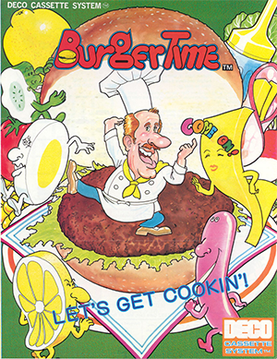
BurgerTime, originally released as Hamburger in Japan, is a 1982 arcade game developed by Data East initially for its DECO Cassette System. The player is chef Peter Pepper, who must walk over hamburger ingredients located across a maze of platforms while avoiding characters who pursue him.
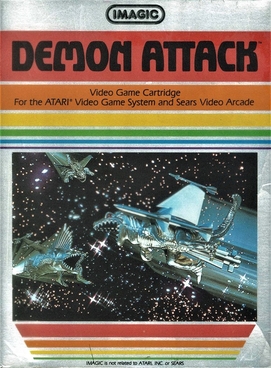
Demon Attack is a fixed shooter written by Rob Fulop for the Atari 2600 and published by Imagic in 1982. It was ported to the Intellivision, Magnavox Odyssey 2, Atari 8-bit family, VIC-20, Commodore 64, Tandy 1000, TRS-80, IBM PCjr, and TRS-80 Color Computer. There is also a port for the TI-99/4A titled Super Demon Attack.

Frog Bog is a 1982 video game by Mattel Electronics for the Intellivision. An Atari 2600 conversion was released later that year as Frogs and Flies. In both games, each player controls a frog sitting on a lily pad, attempting to eat more flies than the other. Frog Bog is similar to the 1978 Sega-Gremlin arcade game Frogs.
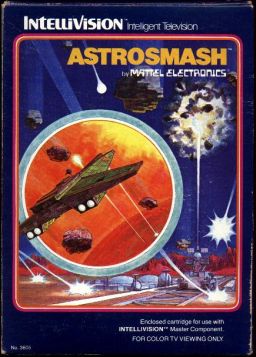
Astrosmash is a fixed shooter video game for the Intellivision console, designed by John Sohl, and released by Mattel Electronics in 1981. The player uses a laser cannon to destroy falling meteors, bombs, and other targets.

Intellivision Lives! is a compilation of over 60 Intellivision video games, originally produced by Mattel Electronics and INTV Corporation between 1978 and 1990. Using original game code and software emulation, Intellivision Productions released the first edition in December 1998 on a Windows and Macintosh hybrid CD-ROM. A sequel, Intellivision Rocks, was released in 2001 that includes third-party games originally published by Activision and Imagic as well as Mattel Electronics Intellivoice and ECS games. Versions of Intellivision Lives! were then released for the PlayStation 2, Xbox, and GameCube by Crave Entertainment. In 2010 Virtual Play Games released a Nintendo DS edition.
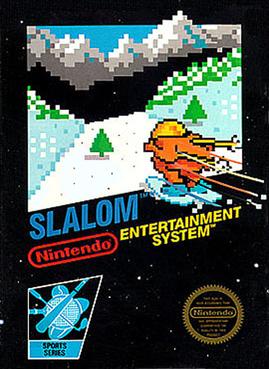
Slalom, originally released as VS. Slalom, is a skiing sports video game developed by Rare and published by Nintendo in 1986 for the Nintendo VS. System in arcades. It was then released for the Nintendo Entertainment System in North America in March 1987 and in Europe later that year. The player races in a series of downhill slalom skiing runs while navigating past flags and obstacles before time expires. It was developed by Tim and Chris Stamper and its music was composed by David Wise.

Microsurgeon is a maze-like video game published by Imagic in 1982 for the Mattel Intellivision game console. The game was ported to the TI-99/4A computer and the IBM PCjr. Microsurgeon was re-released as part of the Intellivision Rocks collection.

Armor Battle is a video game written by Chris Kinglsey for the Intellivision and published by Mattel in 1979. One of the earliest games available for the console, Armor Battle pits two players against each other in a contest to see which player can eliminate their opponent's stock of tanks first.
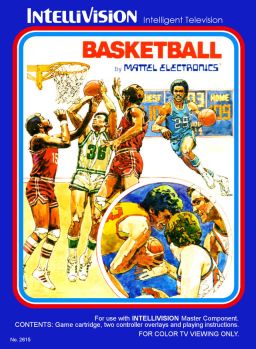
Basketball is a multiplayer sports video game produced by Mattel and released for its Intellivision video game system in 1980. The players each control a basketball team competing in four timed quarters of game play. Mattel obtained a license from National Basketball Association and used the NBA logo in its box art, making it first basketball video game to be licensed by the NBA. NBA Basketball does not use any official team or player names. It was sold by Sears for its private-label version of the Intellivision console, the "Super Video Arcade," without the NBA name or logo.
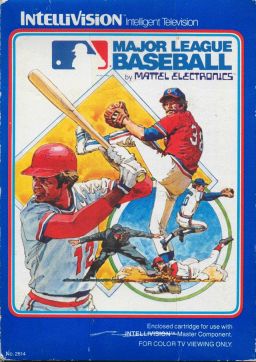
Baseball is a sport video game produced by Mattel and released for the Intellivision home video game console in 1980. As the best-selling game in the console's history, with more than 1 million copies sold, Baseball put players in control of a nine-man baseball team competing in a standard nine-inning game. When first released, Mattel obtained a license from Major League Baseball, although the only trademarked item used is the MLB logo on the box art. No official team names or player names are in the game.

Triple Action is an action video game produced by Mattel Electronics for its Intellivision video game system in 1981. The game actually includes three separate games—racing, tank combat and flying—where two players compete against each other for the best score.

Star Strike is a single-player video game, released by Mattel for its Intellivision video game system in 1981. The Intellivision's best-selling game in 1982, with over 800,000 copies sold, Star Strike was inspired by the attack on the Death Star in the 1977 film Star Wars. The player must drop bombs on alien weapons silos before Earth moves into range.

Hover Force is a video game published by INTV Corporation for the Intellivision video game system in 1986. The game was initially developed by Mattel Electronics with the intent of it being played in 3-D, but the company was shut down before it could be released; INTV, after acquiring the Intellivision assets from Mattel, re-tooled the game, which pits players against a terrorist group laying siege to a city, and released it itself.

Auto Racing is a racing video game written by Larry Zwick and released by Mattel for its Intellivision video game console in 1980. Auto Racing pits two players against each other using a top-down perspective on one of five different race courses. Auto Racing was released under the same name by Sears for its private-label version of the Intellivision console, the "Super Video Arcade."

Space Hawk is a multidirectional shooter released by Mattel for its Intellivision console in 1982. The game is a re-worked version of a previously planned clone of Asteroids in which the player, in a rocket-powered space suit, is drifting in space and shooting down or avoiding targets, including the titular hawks.

Snafu is a video game released by Mattel for its Intellivision video game system in 1981. One of a number of snake games released in the late 1970s and early 1980s, Snafu features players controlling ever-lengthening serpents as they attempt to corner their opponents and trap them.
A vertically scrolling video game or vertical scroller is a video game in which the player views the field of play principally from a top-down perspective, while the background scrolls from the top of the screen to the bottom to create the illusion that the player character is moving in the game world.

NFL Football is a sports video game developed by Mattel and released for its Intellivision video game system in 1979. The players each control a football team competing in a standard four-quarter game. Like Mattel's other sports video games, NFL Football did not use any official National Football League team names or player names, even though Mattel obtained a license from the NFL and used the league's logo in its box art. NFL Football has been cited as the first football video game to have a playbook.



















